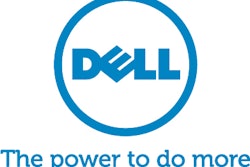The computer gaming industry has been the driver for significant advances in PC graphics processing power, a development that has spread benefits across many industries, including medical imaging. Dutch 3D startup 3mensio believes these gains offer an advantage in facilitating 3D viewing of medical images on standard PCs.
"(We believe) there's an opportunity to (take) the latest graphics technology from the computer games industry and use it for developing solutions that allow radiologists (and) also other medical doctors outside of the radiology department to work with these increasingly large (medical image) datasets more easily," said 3mensio founder and CEO Frank Wessels.
3mensio of Bilthoven, the Netherlands, was founded in August 2003 with the goal of taking advantage of this gaming industry dynamic to help healthcare end-users tackle the problem of ever-growing medical image file sizes.
In recent years, computer games have evolved from a CPU-based gaming environment to one that's driven by graphics processing units (GPUs). These GPUs offer speed and programmability advantages over computer CPUs, an advantage that can be exploited for advanced 3D medical imaging applications. At the same time, they enable users to employ off-the-shelf PCs and save on hardware costs, Wessels said.
3mensio has developed workstation software, called 3viseon, that allows users to perform real-time 3D imaging on the fly, including volume rendering, MPR, and MIP, Wessels said. It can also provide real-time filtering, as well as traditional 2D viewing capabilities, running off a standard PC.
"In our application, 2D and 3D are sort of blended, where at any one time users can basically go back and forth between 2D, 2 1/2D, and 3D, where you can look at thick slabs and then go to true 3D in real-time," Wessels said. "There's no waiting time. While we're loading data over the network from an archive, for instance, you can really visualize the data in 3D, so literally you can see a 3D volume rendering of the brain growing as the application sees more data."
Wessels is no stranger to medical imaging, having served as co-founder of Dutch PACS developer Applicare Medical Imaging, which was purchased by GE Healthcare in 1999.
3viseon can fit into PACS networks of any size, as well as other medical networks, Wessels said. A DICOM interface connects to a local DICOM image database, a remote DICOM archive, or a DICOM part 10 CD. Users can get a list of studies and decide which ones to look at, Wessels said.
In addition to its usefulness to radiologists for diagnostic purposes, 3mensio believes the workstation will be of use to other specialists. For example, the software could be utilized by neurosurgeons during preparations for surgery, according to Kitty Vreeswijk, 3mensio's vice president, marketing.
"Today, this specialist doesn't (typically) use a real 3D workstation, so we're also positioning (the software) outside of radiology," said Vreeswijk, who's also an Applicare veteran.
Given the workstation's reliance on GPU technology, the CPU speed requirements are not a big factor, Wessels said.
"We are literally talking about a PC that you can buy at Dell, for like $1,000 or $1,500, including a monitor," Wessels said.
Initially, 3mensio has focused on developing a "horizontal" application -- meaning one that can be used in different ways by different users, according to Vreeswijk.
"(For example), a neurosurgeon might use the application and be loading the dataset from a CD because he doesn't have a connection to the PACS, or he wants to review it at home," she said. "But for the radiologist, obviously, it's much more convenient if you can have it integrated with the PACS workstation."
The 3viseon software is being deployed at several beta sites in the Netherlands and the U.S., with additional locations to follow in Belgium. Ultimately, depending on feedback from beta sites, 3mensio may elect to develop different versions for different types of users, Vreeswijk said.
3mensio will be exhibiting at the 2004 RSNA meeting in Chicago, and plans to release 3viseon by the first quarter of 2005. The company will also seek distributors to provide sales, integration, and service for its software, focusing initially on the European and U.S. markets.
3mensio is considering a limited direct-sales strategy for the Netherlands and Belgium, with the goal of establishing reference sites and to have direct access to customer feedback, Vreeswijk said. The firm is also interested in forming partnerships with OEMs.
"Our focus is to be a software-only company," Wessels said.
3mensio recently received 1.2 million euros ($1.5 million U.S.) from an investment agreement with European venture capital firms Prime Technology Ventures (PTV) and Gimv. The money will be used for expansion of research and development activities, as well as to accelerate the company's business and marketing operations, Wessels said.
By Erik L. Ridley
AuntMinnie.com staff writer
August 2, 2004
Copyright © 2004 AuntMinnie.com




















